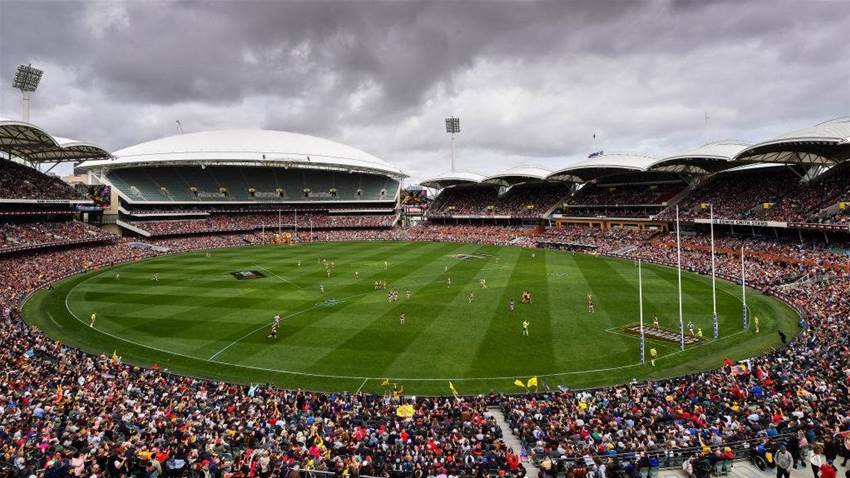'Build it and they will come', goes the saying (and Kevin Costner's career). But if you don't charge for admittance, what does that say about the offering?
The announcement that some AFLW matches in the upcoming season are set to be ticketed may seem a natural evolution for the rapid-growing competition.
But it's also certain to raise a few eyebrows given the stroke of genius the AFL seemed to land upon when it offered free admittance to AFLW matches throughout last season.
This led to brilliant attendances throughout the season, despite teething pains in optimising the game for female players. It led to a brilliant product for Channel 7, who could happily broadcast packed crowds to rapturous television audiences each week.
Best of all, it culminated in a 53,000 attendance at the AFLW Grand Final and the announcement to the Australian sporting public that Australia truly had a new sporting heavyweight, and a pioneer for other female codes to follow.
With the announcement that tier one AFLW players are set to be paid over $37,000 by 2022, for a season that will likely remain under 13 matches, the AFL also appear to be putting their money where their mouth is.
But how far can the competition evolve without ticketing, gate and membership revenue? We tried to find out...
FIRST, HOW MUCH ARE AFL CLUBS WORTH?
While we'll avoid being dragged into a discussion around broadcast revenue and marketing spend, it is interesting to frame these figures within the broader context of the AFL's overall revenue base.
In 2017, AFL clubs generated just under $1 billion AUD, with a rise of over $140 million recorded for the past year.
Meanwhile, total player payments (or the competition salary cap) was set at $13 million overall for the 2019 season.
What does this mean? Well, according to AFL boss Gillion McLachlan, AFL clubs need operating revenues of over $45 million to be 'sustainable' and all three of the clubs that fell under this margin will be involved in the upcoming 2020 AFLW season (GWS Giants, Gold Coast Suns, North Melbourne).
THE IMPORTANCE OF MATCH REVENUE
Perhaps most extraordinarily, broadcast revenue only accounts for a roughly similar income for each AFL club as actual ticket sales and memberships.
This doesn't even include merchandise and other stadium revenue, which emphasises the huge role that ticket prices play in a league with a large amount of teams sharing the overall broadcast package.
It's also interesting to view this potential cash-cow within the prism of average attendances. Competition-wide, the AFL regularly achieves average attendances of over 30,000 people, often exceeding major global competitions like the English Premier League.
Marquee fixtures also garner crowds of 70,000 plus in Melbourne, revenue that substantially increases the spending power of Melbourne teams.
As the AFLW grows and becomes an established product-of-choice among sports fans, this potential revenue becomes too large to ignore.
While it's worth noting that these attendances in turn reflect individual team sponsorship agreements, (and a significant dip in attendances could hurt other tallies on the bank balance) given these are often shared between men's and women's teams, any dip would likely have a marginal end result.
Double-header matches are another potential way of increasing gate revenue now that the AFL and AFLW seasons are set to overlap, with three matches set to become double-headers for the upcoming season.
Related Articles

Updated: AFLW Round 2 preview and schedule

Socceroo star's message to kids: Don't be an AFL player













